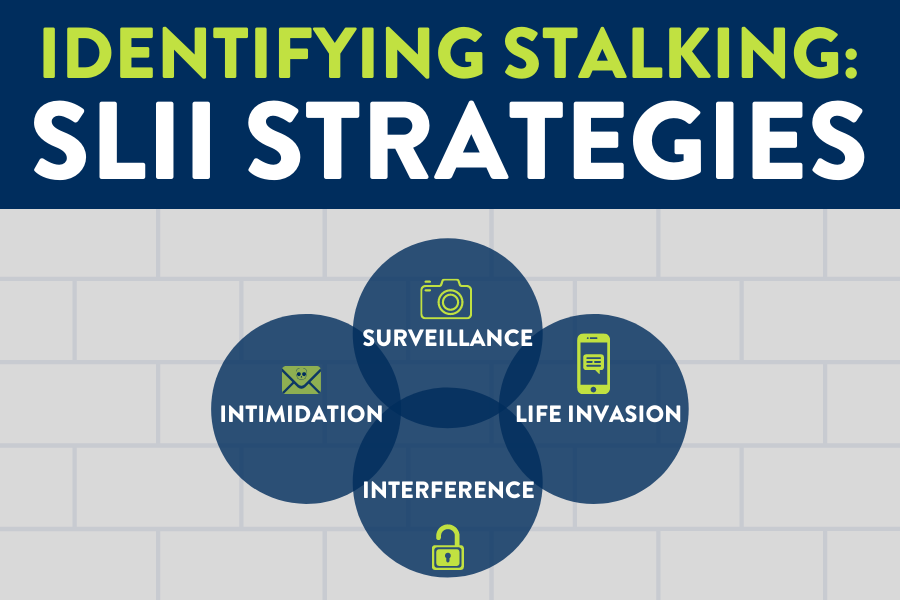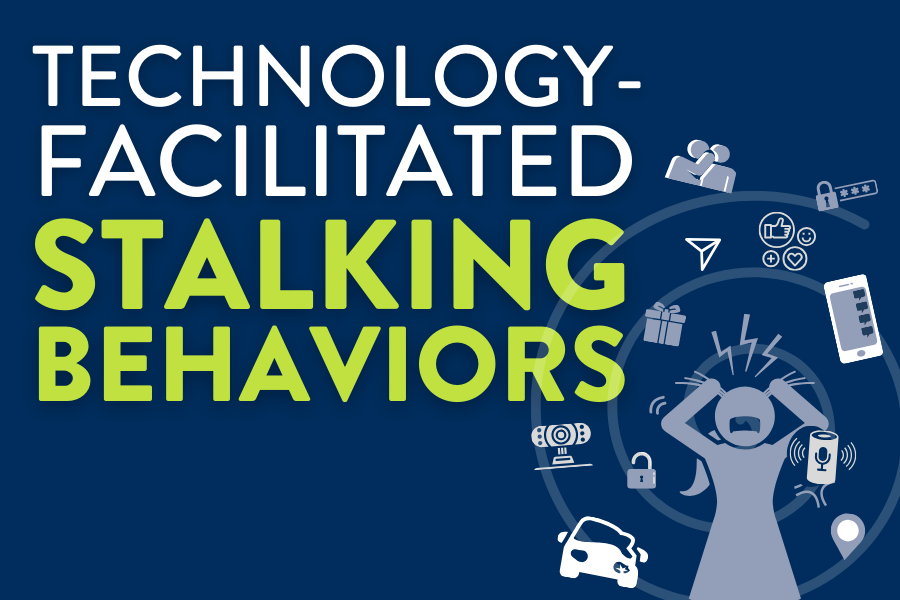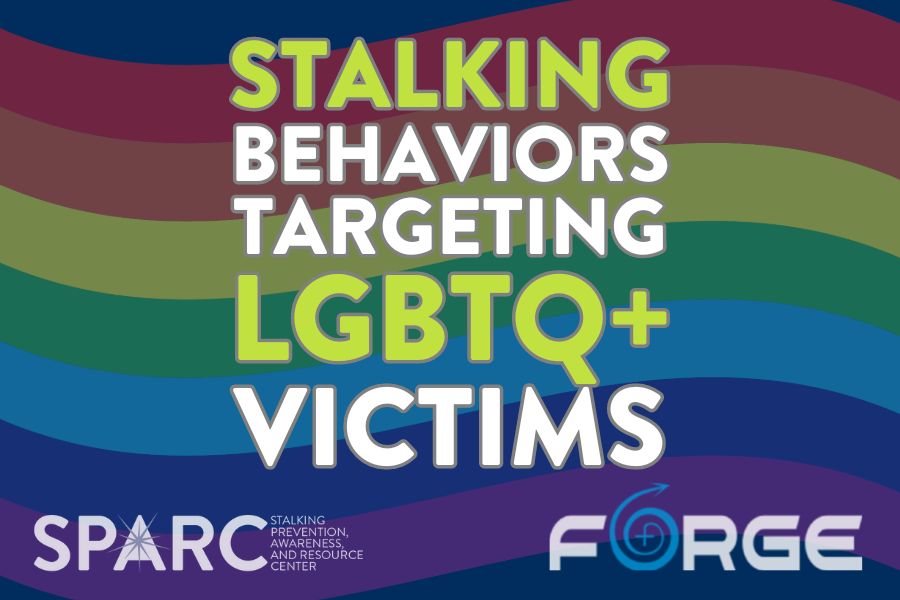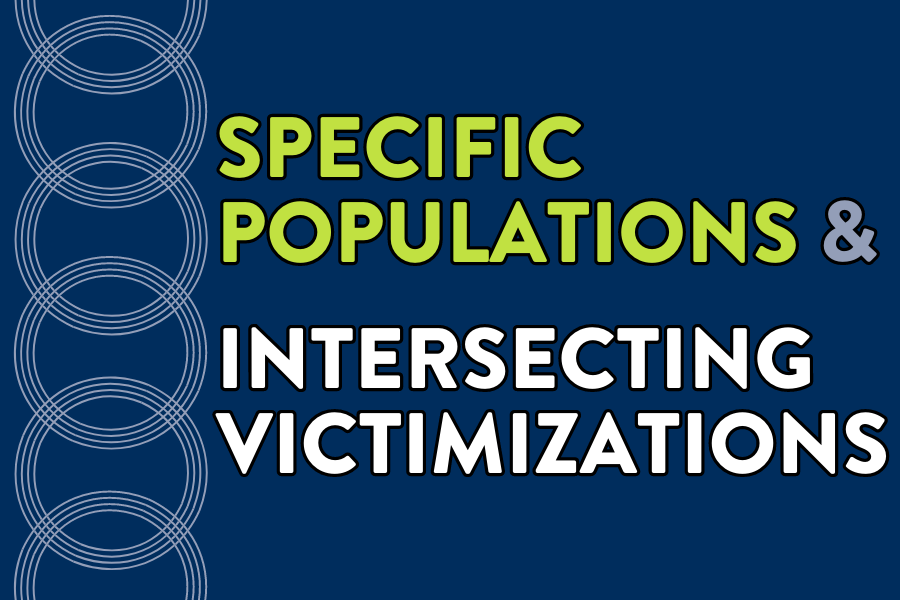Stalking is its own crime with its own risks, safety planning needs, and legal responses. Research and practice show that victims are unlikely to use the words ‘stalking’ or ‘harassment’ when talking about their situation and may not know their experiences amount to stalking victimization; instead of asking victims if they are being stalked, it is best to ask victims specific questions about stalking behaviors. (SPARC categorizes stalking behaviors into SLII strategies: Surveillance, Life Invasion, Intimidation, and Interference through sabotage or attack.) In addition, stalking behaviors are varied and may change over time, and most stalkers engage in multiple tactics to scare their victims. Victims respond to trauma differently, and may present as annoyed, frustrated, angry, or show no emotion at all rather than appearing scared.
The resources below can help responders screen for stalking to determine if stalking victimization and/or fear is present in order to effectively assess risk, consider legal options, and/or safety plan.










